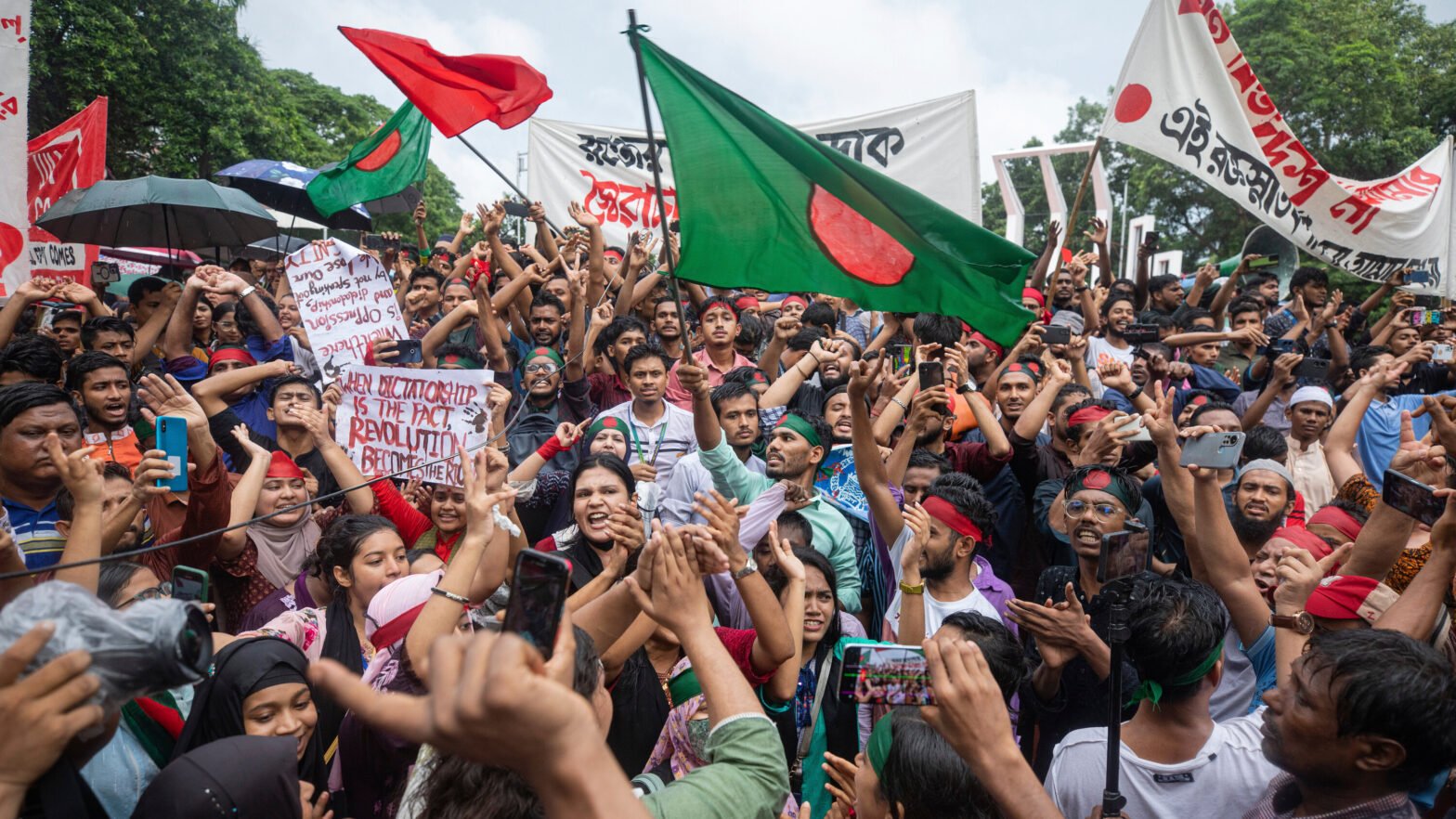Protests that started as a student movement driven by longstanding dissatisfaction over a quota system to allocate government jobs in Bangladesh have precipitated a change in the country’s political leadership.
These jobs, of which 30% were reserved for independence war veterans and their relatives, are highly sought after. The rate of youth unemployment in Bangladesh is three times higher than the national average and, according to a survey from 2013, around a fifth of students want to work in the public sector.
But the issue of youth unemployment and underemployment is by no means exclusive to Bangladesh. In fact, young people in many low-income countries find decent work hard to come by. A mere one-in-five people aged between 25 and 29 in these countries have a secure job that lasts longer than a year, with a paying employer and a contract.
Many young people instead patch together several activities to make a living or end up migrating for work. Some take on debt or badly paid and sometimes dangerous jobs. Others take up gambling in the hope of generating an income.
A youthful population can be a driver for development. South Korea’s per capita GDP growth of 2,200% between 1950 and 2008, for instance, has been linked to investment in the country’s youth. But in many places around the world, the foundations on which young people can build a future are fragile.

The overriding issue in many lower-income countries is that there simply aren’t enough jobs for the number of young people that want them. In stark contrast to wealthy countries where low birth rates and long life expectancy combine to create an ageing population, many middle and low-income countries have large and sometimes growing youth populations.
At the same time, valuable sources of employment in lower-income countries have been lost. This can, in part, be traced back to the 1980s and 1990s when loans and other forms of financing were provided to low-income countries on the condition that they make structural economic reforms.
These reforms have included liberalising trade, reforming taxes and public investment, reducing government spending, and introducing wage restraints and employment flexibility. They have resulted in job losses and layoffs in many countries, including from the public sector.
Permanent contracts and reliable hours of work are also relatively rare. More than half of all workers globally were in informal employment in 2024, which means they are not covered by national labour legislation and social protection. And research has found that young workers experience higher levels of informality than their older counterparts.
Despite improvements in educational attainment in lower-income countries, young people often struggle to enter the labour market. Within this context, many are forced to flee their country altogether.
The current exodus of young people from Nigeria, which has been nicknamed a japa wave after the Yoruba word for run or flee, is a case in point.
In 2019, more than a quarter of young Nigerians were classified as “not in education, employment or training” (Neet). And the number of Nigerian passports newly issued or renewed nearly doubled between 2021 and 2022, from 1 million to 1.9 million.
Things are particularly hard for young women. There are twice as many Neet young women globally as there are young men. In most countries, including lower-income countries, women face additional structural barriers in their search for decent work.
These include social norms on the extent of young women’s labour market participation and restrictive stereotypes concerning the types of employment deemed appropriate for them.
A variety of other factors have compounded the missing jobs crisis. Climate change is rendering young people’s working lives more precarious. Meanwhile, some young people were forced to take up new debt and more dangerous work during the pandemic just to get by.
Most efforts to help young people secure better jobs in low-income countries focus on providing them with education and training opportunities. But these interventions miss the heart of the issue: that young people cannot access decent work opportunities if those opportunities do not exist.
The key is to boost labour market demand and create better quality jobs. This can be achieved, in part, by prioritising employment and job creation in economic policy.
In 2023, the African Union and International Labour Organization unveiled a youth employment strategy for Africa. The strategy aims to create jobs for young people by directing investment into key areas for future youth employment: the green, care and digital industries.
Entrepreneurship is also seen as a crucial avenue for supplying more jobs in low-income countries. In fact, small- and medium-sized enterprises and mid-sized companies are responsible for almost 70% of jobs globally.
The Mastercard Foundation’s Young Africa Works strategy, which aims to help 30 million young people in Africa secure employment by 2030, sees entrepreneurs and small businesses as the engine for job creation.
However, such an approach requires a degree of caution as entrepreneurship tends to have high rates of failure. In Uganda, just 30% of small businesses reach their third birthday. And more than 70% of micro, small and medium businesses in South Africa fold within seven years.
The recent uprising in Bangladesh highlights the capacity for young people to drive societal change. The engagement and empowerment of young people are key for finding solutions to the widespread and persistent challenge of youth underemployment.
But the burden to solve this structural issue should not fall entirely on young people themselves. A transition to economies that are rich in jobs for young people can, if done well, help us tackle climate change and the care crisis, providing strong foundations for our shared present and future.





















